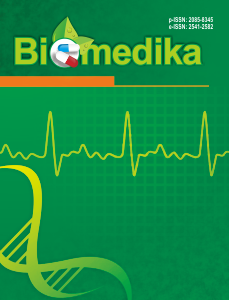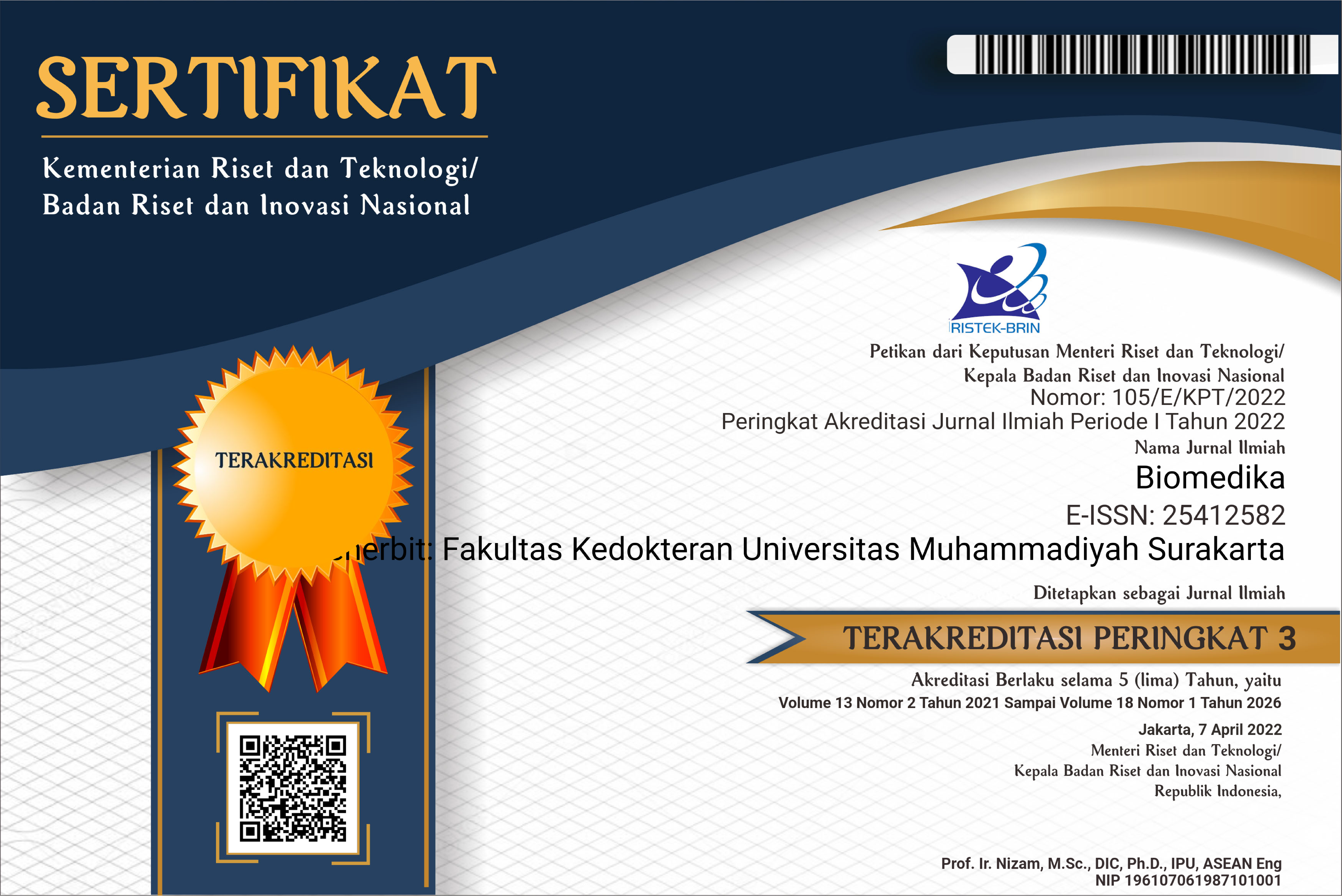Detection Of Bordetella Pertussis the Cause of Whooping Cough: A Narrative Review
DOI:
https://doi.org/10.23917/biomedika.v16i1.2799Keywords:
Bordetella pertussis, Whooping cough, Filamentous hemmagglutinin (FHA), Pertussis toxinAbstract
Bordetella Perussis transmits pertussis disease, known as whooping cough, through airborne secretions from the respiratory tract. The bacteria then attach to the epithelial cilia of the respiratory tract of other hosts. One of the main virulence factors produced by Bordetella pertussis is pertussis toxin (PTx) which in its inactivated form is the main component of all acellular pertussis vaccines. In addition, PTx also activates several receptors and can affect various signaling pathways independent of ADP ribosylation and adenylate cyclase. PTx has been used in many research fields due to its strong ADP-ribosylation properties. To detect PTx Bordetella pertussis can use diagnostic tests such as serology test. Aim of this literary study is to determine the types of examinations for the detection of Bordetella pertussis. This study used a narrative review method sourced from searches on PubMed and ScienceDirect. The results of this search showed various types of Bordetella pertussis detection, including detection by culture, serology, and PCR. In conclusion, culture is still recommended to assess vaccine efficacy and future vaccine development, serological tests are one of the main diagnostic procedures in cases of unvaccinated adolescents and adults using specific B. pertussis proteins as antigens, in the presence of increased IgA or IgG titers against the toxin pertussis (PT) and filamentous hemmagglutinin (FHA). PCR as a diagnostic tool for pertussis in neonates and children.
Downloads
Submitted
Accepted
Published
Issue
Section
License
Copyright (c) 2024 Biomedika

This work is licensed under a Creative Commons Attribution 4.0 International License.












